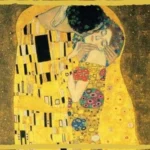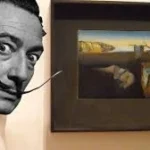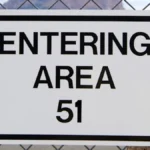
Welcome to the enchanting world of calligraphy, where art and language intertwine to create stunning visual expressions! Whether you’re a seasoned calligrapher, a curious beginner, or simply someone who appreciates the beauty of written words, this blog is designed to inspire and inform. Calligraphy is not just about writing; it’s a rich tradition that spans cultures and centuries, filled with fascinating techniques, materials, and stories. In this post, we’ll explore 25 interesting facts about calligraphy that reveal its historical significance, artistic evolution, and modern applications. Join us as we delve into the intricacies of this timeless craft and discover what makes calligraphy a cherished art form across the globe!
Definition: Calligraphy is defined as the art of beautiful handwriting, which emphasizes the aesthetic quality of the written word. The term itself comes from the Greek words “kallos,” meaning beauty, and “grapho,” meaning to write. This art form transcends mere writing; it is a visual art that combines form, style, and expression. Calligraphy is often characterized by its flowing lines, intricate designs, and the use of various techniques that enhance the visual appeal of letters and words.
History: The history of calligraphy is rich and varied, tracing back to ancient civilizations across the globe. It is believed that the earliest forms of calligraphy emerged in China over 3,000 years ago, where characters were inscribed on oracle bones. Similarly, in the Middle East, Arabic calligraphy developed as a means of transcribing the Quran, becoming a revered art form in Islamic culture. Western calligraphy has its roots in Roman script, evolving through the Middle Ages with the creation of illuminated manuscripts, which were painstakingly crafted by monks in monasteries.
Chinese Calligraphy: Chinese calligraphy is one of the oldest and most esteemed forms of calligraphy, with a history that spans over 3,000 years. It is deeply intertwined with Chinese culture and philosophy, reflecting the values of harmony, balance, and the importance of nature. The practice involves the use of a brush and ink, with various styles such as Seal Script, Clerical Script, and Regular Script. Each style carries its own unique characteristics and historical significance, and the act of writing is often viewed as a meditative practice that connects the calligrapher to their cultural heritage.
Arabic Calligraphy: Arabic calligraphy is a highly respected art form within the Islamic world, renowned for its intricate designs and fluidity. It plays a significant role in the decoration of mosques, manuscripts, and various forms of art. The use of Arabic script in calligraphy is not just about writing; it is an expression of faith and beauty. Artists often employ various styles, such as Naskh, Thuluth, and Diwani, each with distinctive features. The art form has evolved over centuries, with contemporary artists experimenting with modern interpretations while still honoring traditional techniques.
Western Calligraphy: Western calligraphy gained prominence during the Middle Ages, particularly with the rise of illuminated manuscripts, which were elaborately decorated texts that combined artistry with literature. The development of the Carolingian minuscule by Charlemagne’s scholars marked a significant turning point in Western calligraphy, leading to greater legibility and elegance in script. Over time, various styles emerged, including Gothic and Italic scripts, each reflecting the cultural and artistic trends of their respective periods. Today, Western calligraphy continues to thrive, blending traditional techniques with modern design.
Tools: Traditional calligraphy employs a variety of tools to achieve its distinctive styles. The primary tools include brushes and dip pens, each offering different effects. Brushes, often made from animal hair, allow for fluid strokes and varying line thicknesses, while dip pens are equipped with metal nibs that can create sharp, precise lines. Calligraphers also use specialized inks, which can be water-based or pigment-based, and high-quality paper designed to handle the flow of ink without bleeding. The choice of tools significantly impacts the final appearance of the calligraphic work.
Brush vs. Pen: The choice between brush and pen in calligraphy greatly influences the style and appearance of the writing. Brush calligraphy is characterized by its dynamic, flowing lines and is often used in Eastern calligraphy traditions. The brush allows for a wide range of stroke widths and expressive flourishes, making it ideal for creating artistic compositions. In contrast, pen calligraphy tends to be more structured, with defined angles and consistent line widths. This style is commonly used in Western calligraphy and is often seen in formal invitations and documents, where precision is paramount.
Styles: Calligraphy encompasses a wide range of styles, each with its unique characteristics and historical significance. Some of the most notable styles include Gothic, known for its ornate and angular letters; Italic, which features slanted and flowing forms; and Copperplate, recognized for its elegant loops and flourishes. Each style requires different techniques and tools, and calligraphers often specialize in one or more styles, allowing them to express their creativity while adhering to traditional forms. The diversity of calligraphic styles reflects the cultural and artistic influences of different regions and periods.
Calligraphy in Japan: In Japan, calligraphy is known as “Shodo,” which translates to “the way of writing.” This art form emphasizes the beauty of each stroke and the balance between the brush, ink, and paper. Shodo has a history that dates back over a thousand years and is deeply rooted in Japanese culture, influenced by Chinese calligraphy. Practitioners of Shodo often engage in a meditative process, focusing on the flow of ink and the precision of their strokes. The art form encompasses various styles, including Kaisho (block style), Gyosho (semi-cursive), and Sosho (cursive), each offering different levels of abstraction and expressiveness. Shodo is not only a means of communication but also a form of artistic expression, often showcased in exhibitions and competitions, where the beauty and emotion of each piece are celebrated.
Cursive Script: Cursive script, which evolved from calligraphy, is a style of writing that emphasizes fluidity and speed. Unlike traditional calligraphy, which often focuses on the aesthetic quality of each letter, cursive writing allows for a more spontaneous and connected flow of letters. This style became particularly popular in the 18th and 19th centuries, especially in Western cultures, as it facilitated quicker writing for everyday use. Cursive script is characterized by its slanted letters and connected strokes, making it a practical choice for personal correspondence and note-taking. Despite the rise of digital communication, cursive writing remains an important skill, often taught in schools to promote handwriting proficiency and personal expression.
Calligraphy Competitions: Calligraphy competitions are held worldwide, showcasing the incredible talent and creativity of calligraphers. These events provide a platform for artists to display their skills, often judged by experts in the field. Competitions can vary in focus, from traditional styles to modern interpretations, and may include categories such as best use of color, creativity, and execution of technique. Participants often prepare extensively, creating pieces that reflect their personal style and mastery of the art. Winning or being recognized in these competitions can significantly elevate a calligrapher’s profile and open up opportunities for exhibitions and commissions.
Digital Calligraphy: With advancements in technology, digital calligraphy has emerged as a popular medium. This form allows artists to create beautiful lettering using graphic design software, such as Adobe Illustrator or Procreate. Digital tools offer flexibility and precision, enabling calligraphers to experiment with various styles, colors, and effects without the limitations of traditional materials. The rise of social media has further popularized digital calligraphy, as artists share their work online, reaching a broader audience. Additionally, digital calligraphy can be easily reproduced for various applications, including branding, invitations, and merchandise, making it a versatile choice for contemporary artists.
Therapeutic Benefits: Practicing calligraphy has been recognized for its therapeutic benefits, promoting mindfulness and relaxation. The repetitive motions involved in writing can have a calming effect, allowing individuals to focus their thoughts and reduce stress. Many people find that the act of creating beautiful letters helps them to disconnect from daily pressures and engage in a meditative state. As a form of art therapy, calligraphy can enhance fine motor skills, improve concentration, and boost self-esteem through the accomplishment of creating visually appealing work. Workshops and classes often incorporate these therapeutic aspects, attracting participants seeking both artistic expression and mental wellness.
Calligraphy in Wedding Invitations: Handwritten calligraphy is a popular choice for wedding invitations, adding a personal and elegant touch to the occasion. Couples often opt for calligraphy to convey a sense of sophistication and romance, enhancing the overall aesthetic of their wedding stationery. The intricate designs and flowing scripts can set the tone for the event, making the invitations feel more special and unique. Calligraphers may work closely with clients to create custom designs that reflect the couple’s style, incorporating elements like monograms, decorative flourishes, and color schemes. This trend has led to a resurgence in the demand for skilled calligraphers, as couples seek to make their invitations stand out.
Famous Calligraphers: Throughout history, several calligraphers have made significant contributions to the art form, influencing styles and techniques. One notable figure is Edward Johnston, who is often referred to as the father of modern calligraphy. His work in the early 20th century emphasized the importance of legibility and the beauty of letterforms, leading to the development of the Johnston typeface used in London’s Underground signage. Other influential calligraphers include Hermann Zapf, known for his type designs and calligraphic works, and Sheila Waters, who has contributed extensively to the education and promotion of calligraphy. These artists have inspired generations of calligraphers and continue to impact the field.
Calligraphy in Tattoos: The influence of calligraphy extends into the world of tattoos, where script and lettering designs are highly sought after. Many individuals choose calligraphic styles for tattoos to convey meaningful quotes, names, or phrases in a visually appealing manner. The fluidity and elegance of calligraphy lend themselves well to body art, allowing for unique interpretations that reflect personal stories or beliefs. Tattoo artists often collaborate with calligraphers to create custom designs that blend typography with artistic elements, resulting in tattoos that are both beautiful and significant. This trend highlights the versatility of calligraphy as an art form that transcends traditional mediums.
Historical Manuscripts: Calligraphy played a vital role in the creation of historical manuscripts, which were essential for the preservation and dissemination of knowledge throughout the ages. Before the advent of printing, skilled scribes meticulously copied texts by hand, often embellishing them with decorative elements and illustrations. These illuminated manuscripts, created during the Middle Ages, were valuable works of art that combined text and imagery, often produced for religious or scholarly purposes. Calligraphers were highly respected in their societies, and their work contributed to the cultural heritage of many civilizations. Today, these manuscripts are treasured artifacts, providing insight into historical practices and artistic styles.
Ink Types: Calligraphy inks are crafted from a diverse range of materials, which can be broadly categorized into natural pigments and synthetic dyes. Natural pigments are derived from minerals, plants, and other organic sources, providing a rich and varied color palette that can evoke a sense of tradition and authenticity. Synthetic dyes, on the other hand, offer vibrant colors and consistency, making them popular among modern calligraphers. The choice of ink can significantly affect the final outcome of a calligraphy piece, influencing factors such as flow, drying time, and finish. Additionally, some calligraphers experiment with metallic or iridescent inks to add a unique flair to their work.
Paper Types: The choice of paper is crucial in calligraphy, as it directly impacts the quality of the writing and the overall aesthetic of the piece. Calligraphers often prefer specific types of paper, such as vellum, which is made from animal skin and provides a smooth surface that allows for precise strokes. Handmade paper is another favorite, known for its unique texture and character, which can enhance the visual appeal of the calligraphy. Other popular options include watercolor paper and specialty calligraphy paper, each offering different weights and finishes that cater to various styles and ink types. The right paper can help prevent bleed-through and feathering, ensuring that the calligrapher’s work remains sharp and clean.
Calligraphy Workshops: Many artists and calligraphers offer workshops designed to teach the art of calligraphy to beginners and enthusiasts alike. These workshops typically cover a range of topics, including basic techniques, tools, and styles, providing participants with hands-on experience. Instructors often share their personal insights, tips, and tricks to help students develop their skills. Workshops can vary in length, from a few hours to several days, and may cater to different skill levels. Additionally, some workshops are held in-person, while others are available online, making it accessible for individuals regardless of their location. This educational aspect not only fosters a community of calligraphy enthusiasts but also helps preserve this ancient art form.
Cultural Significance: Calligraphy holds significant cultural importance in many societies around the world, often regarded as a symbol of education, refinement, and artistic expression. In cultures such as Chinese, Arabic, and Japanese, calligraphy is not just a means of communication but also a revered art form that reflects philosophical and aesthetic values. The practice of calligraphy can convey deep meanings, with each stroke and style representing different emotions or concepts. In historical contexts, skilled calligraphers were highly respected, and their work was often associated with nobility and scholarship. Today, calligraphy continues to be celebrated in various cultural events and exhibitions, highlighting its enduring legacy and relevance.
Modern Calligraphy: Modern calligraphy is a contemporary take on traditional calligraphic practices, blending classical techniques with modern design elements. This style often incorporates a variety of tools, such as brush pens and markers, allowing for more expressive and fluid writing. Modern calligraphy is frequently seen in branding, invitations, and graphic design, where it adds a personal touch and artistic flair. The versatility of modern calligraphy enables artists to experiment with different styles and formats, resulting in unique and eye-catching pieces. This evolution of calligraphy reflects current trends while honoring its historical roots, making it accessible to a broader audience.
Calligraphy in Art: Calligraphy is increasingly being integrated into visual art pieces, merging text and imagery to create compelling compositions. Artists often use calligraphy as a focal point or as an embellishment within their artwork, exploring the relationship between words and visuals. This fusion allows for a rich storytelling experience, where the text can enhance the meaning of the imagery or vice versa. Calligraphy in art can take many forms, from large-scale murals to intricate illustrations, and it often showcases the artist’s unique style and creativity. This trend highlights the versatility of calligraphy as an art form and its ability to transcend traditional boundaries.
Famous Quotes: Many calligraphers specialize in creating art pieces that feature famous quotes, skillfully combining typography with design elements to produce visually striking works. These pieces often reflect the calligrapher’s interpretation of the quote, using various styles and embellishments to convey the message’s essence. The choice of quotes can range from literary excerpts to inspirational sayings, making them popular for home decor, gifts, and special occasions. By transforming meaningful words into artistic expressions, calligraphers not only celebrate the power of language but also engage viewers on an emotional level, inviting them to reflect on the sentiments conveyed.
Learning Resources: For those interested in learning calligraphy, numerous resources are available across various platforms, including online courses, tutorials, and books. These resources cater to different skill levels, from complete beginners to advanced practitioners, providing step-by-step guidance on techniques, tools, and styles. Many calligraphy websites and social media channels offer free tutorials and community support, allowing learners to connect with other enthusiasts and share their progress. Additionally, instructional books often include exercises and templates to help beginners practice essential strokes and develop their unique style. Many calligraphers also host online workshops or webinars, providing an interactive learning experience where participants can ask questions and receive feedback in real time. This wealth of learning resources has made calligraphy more accessible than ever, encouraging a new generation of artists to explore this beautiful and intricate art form.
FAQs about Calligraphy
1. What is calligraphy?
Calligraphy is a visual art related to writing. It’s the design and execution of lettering with a broad-tipped pen, brush, or other writing instrument. More than just neat handwriting, calligraphy emphasizes the aesthetic qualities of writing, focusing on the form, rhythm, and harmony of the letters. It’s a way to express ideas and emotions through beautiful and stylized writing.
2. What’s the difference between calligraphy and handwriting?
While both involve writing, they differ significantly:
- Handwriting: Everyday writing, typically done quickly and legibly, with less emphasis on aesthetics. The focus is on communication.
- Calligraphy: A deliberate art form, where the visual appearance of the letters is as important as the message. It emphasizes precision, rhythm, and artistry. It’s often used for special occasions, invitations, or artistic expression.
3. What are the different types of calligraphy?
Calligraphy encompasses many styles, each with its own characteristics:
- Copperplate Script: An elegant, formal script characterized by thin upstrokes and thick downstrokes, often used for invitations and certificates.
- Spencerian Script: A flowing, graceful script popular in the 19th century, also known for its thin and thick strokes.
- Italic Script: A slanted, flowing script that’s both legible and beautiful, often used for everyday writing and more informal occasions.
- Gothic Script (Blackletter): A dramatic, angular script with dense, complex letterforms, often used for formal documents and display pieces.
- Uncial Script: A rounded, elegant script developed in the later Roman Empire, characterized by its smooth, flowing lines.
- Modern Calligraphy: A broader category that encompasses contemporary interpretations of traditional scripts and new, innovative styles.
4. What materials do I need to get started with calligraphy?
The materials needed depend on the specific style you want to learn, but some basics include:
- Pens: Broad-tipped pens (fountain pens, dip pens, or parallel pens) are essential for creating the characteristic thick and thin strokes of calligraphy. Felt-tip markers designed for calligraphy are also an option for beginners.
- Ink: Calligraphy inks are available in a variety of colors and formulations. For dip pens, you’ll need ink that’s designed for them. Fountain pen ink can be used in some calligraphy pens.
- Paper: Smooth, high-quality paper is important to prevent feathering and bleeding of the ink. Calligraphy paper or paper with a smooth finish is recommended.
- Practice Pad: A practice pad or grid paper can be helpful for learning the basic strokes and letterforms.
- Ruler and Pencil: These tools are useful for creating guidelines and ensuring consistent letter heights and spacing.
5. How do I learn calligraphy?
Learning calligraphy takes time and practice, but here are some helpful tips:
- Start with the Basics: Begin by learning the fundamental strokes and letterforms of your chosen script.
- Practice Regularly: Consistent practice is crucial for developing muscle memory and improving your technique.
- Take a Class or Workshop: Learning from an experienced calligrapher can provide valuable guidance and feedback.
- Use Online Resources: Numerous online tutorials, videos, and websites offer instruction in calligraphy.
- Join a Calligraphy Community: Connecting with other calligraphers can provide inspiration, support, and feedback.
- Be Patient: Mastering calligraphy takes time and dedication. Don’t get discouraged if you don’t see results immediately.
6. What are some good resources for learning calligraphy?
Many resources are available for learning calligraphy:
- Books: Numerous books on calligraphy cover different styles, techniques, and materials.
- Online Tutorials: Websites and YouTube channels offer free and paid calligraphy tutorials.
- Online Courses: Online platforms offer structured courses on calligraphy.
- Workshops and Classes: Local art centers and calligraphy guilds often offer workshops and classes.
- Calligraphy Communities: Online forums and social media groups connect calligraphers from around the world.
7. What is modern calligraphy?
Modern calligraphy is a contemporary approach to the art, often blending traditional techniques with new styles and materials. It allows for more freedom and creativity than traditional scripts, and often incorporates elements of hand lettering and illustration.
8. What is the difference between calligraphy and hand lettering?
While related, they have distinct characteristics:
- Calligraphy: Uses specific tools (broad-tipped pens, brushes) to create thick and thin strokes in a single stroke. The letterforms are usually based on established scripts.
- Hand Lettering: Involves drawing letters, rather than writing them. It allows for more customization and unique letterforms. Hand lettering can be more illustrative and less constrained by traditional rules.
9. What is brush lettering?
Brush lettering is a type of hand lettering that uses brushes or brush pens to create thick and thin strokes. It’s a popular style for creating decorative lettering and hand-lettered quotes.
10. What are some common uses for calligraphy?
Calligraphy is used in a variety of applications:
- Invitations: Wedding invitations, announcements, and other formal events often feature calligraphy.
- Signage: Calligraphy can be used for creating elegant and eye-catching signs.
- Certificates and Awards: Calligraphy adds a touch of elegance to certificates and awards.
- Lettering Art: Calligraphy can be used to create beautiful works of art.
- Personalized Gifts: Calligraphy can be used to personalize gifts and make them extra special.
- Journaling and Scrapbooking: Calligraphy can add a decorative touch to journals and scrapbooks.









